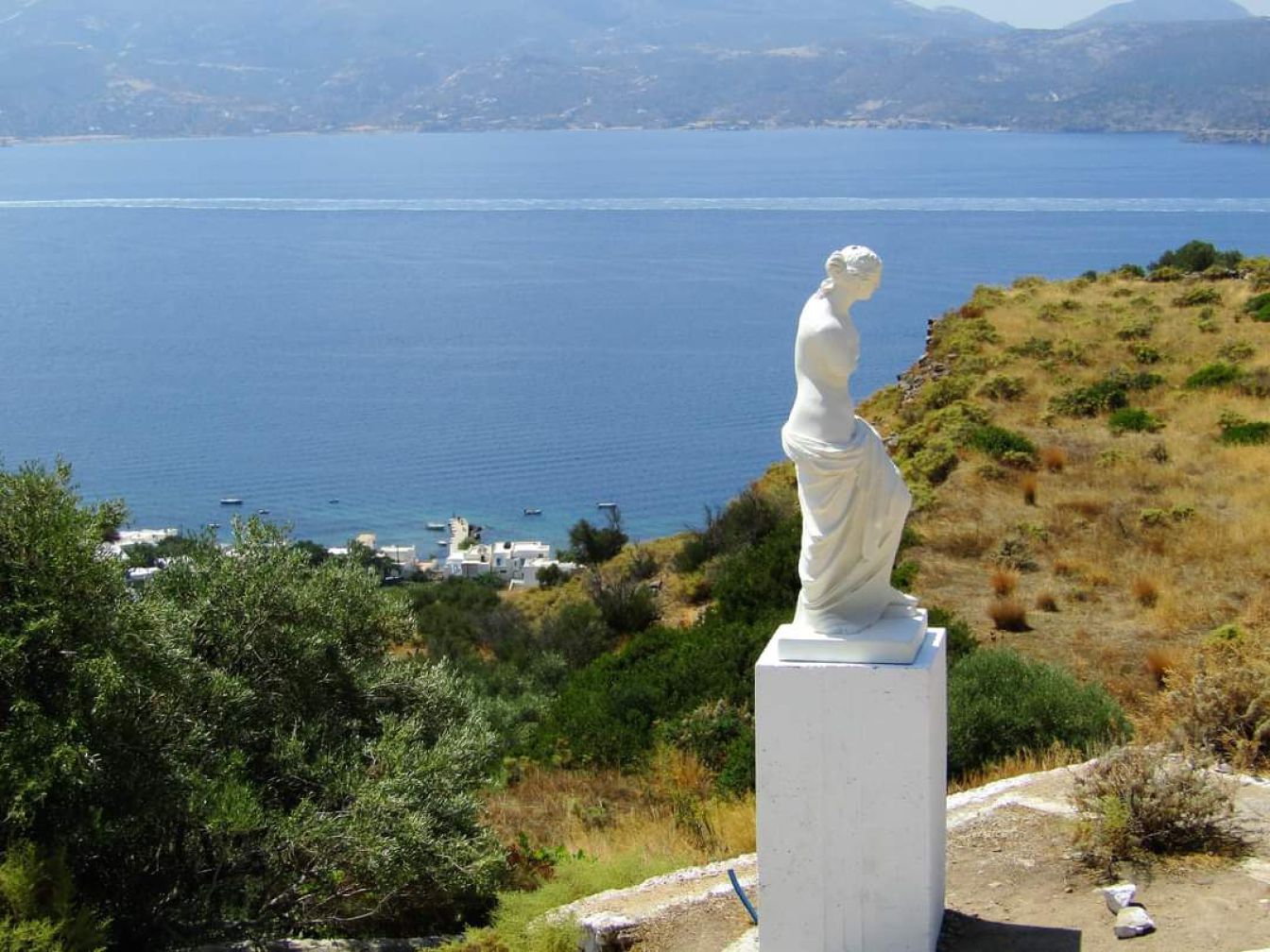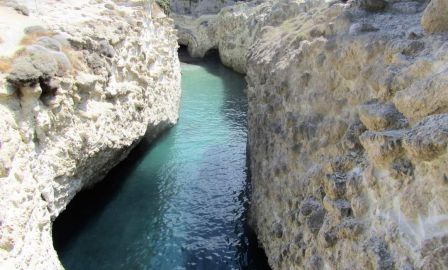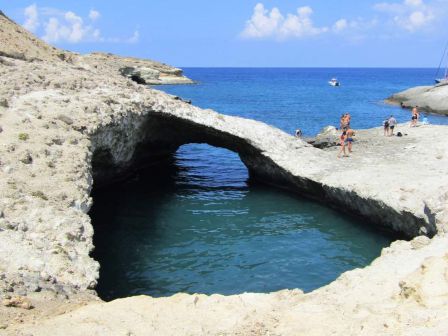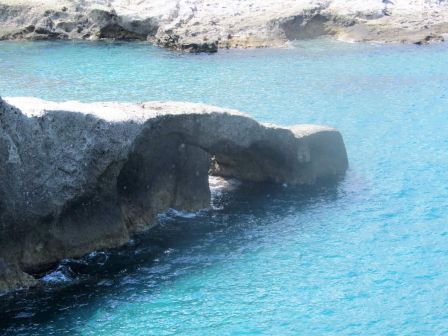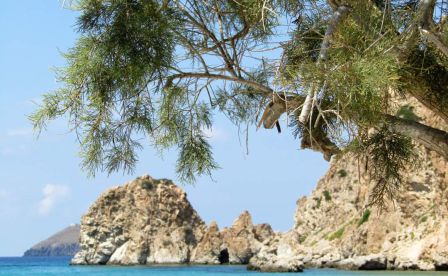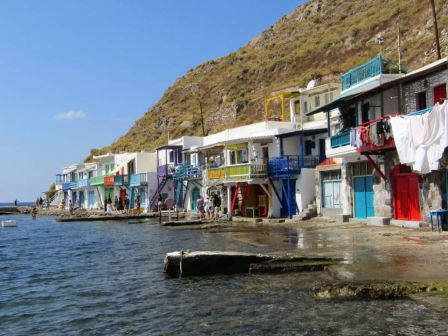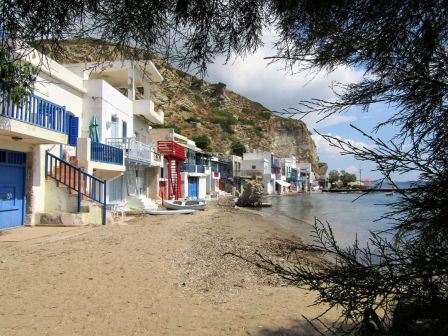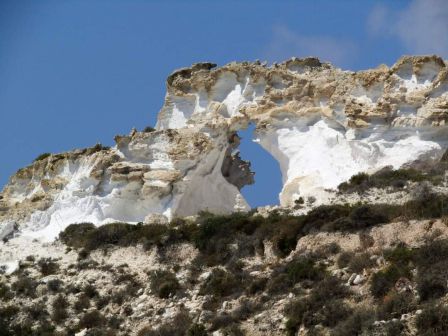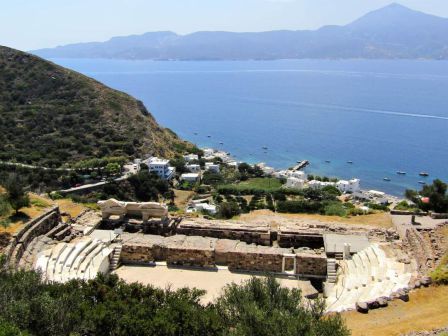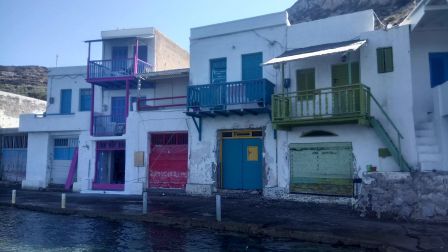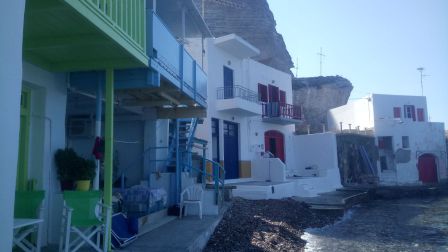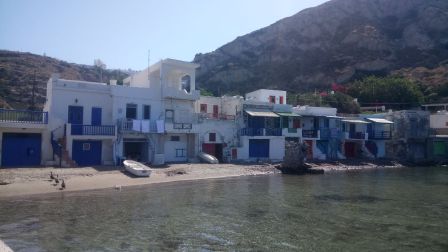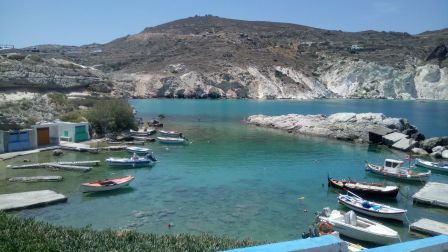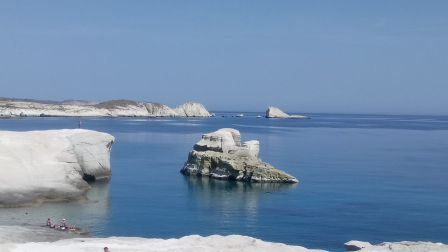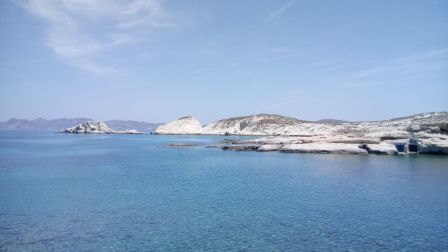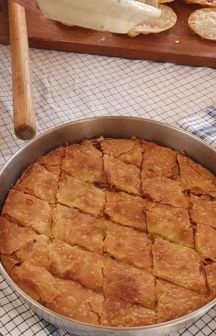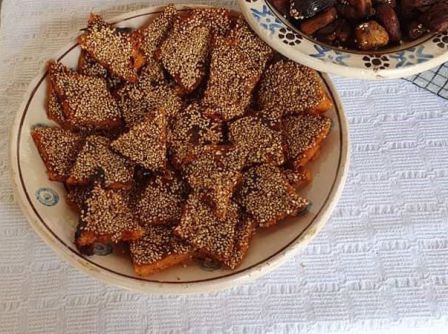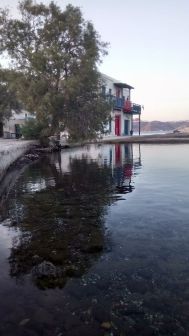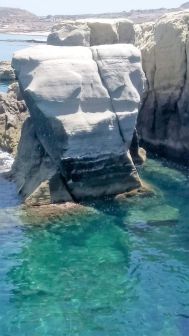A volcanic island full of beauty and history, Milos is known for its diverse range of rocks and minerals. Even today, it exports gypsum, manganese, bentonite, sulfur, perlite, millstone, and many other types of minerals that visitors can explore and learn more about at the Mining Museum of Milos. The unique rocks can be seen on the countless beaches of the island, forming white, pink, and beige cliffs. Famous beaches such as Sarakiniko, Triades, Paleochori, Geronta, Fyriplaka, Agia Kyriaki, Kleftiko, Theiorichia, Tsigkrado, and many more attract countless visitors each year to admire and enjoy the crystal-clear waters and impressive landscapes.
The famous Aphrodite of Milos, a marble statue displayed at the Louvre Museum, was discovered in the village of Tripiti on the island in 1820 by French explorers. The island has been inhabited since 8000 BC and has seen various civilizations throughout its history, including the Phoenicians, Dorians, Athenians, Romans, Byzantines, and Venetians. As a result, Milos has a highly interesting traditional cuisine with a wide variety of dishes.
Livestock farming is one of its main characteristics, and it produces cheeses such as manoura (fresh cheese aged for 10-15 days), melichloro (slightly matured cheese, aged for 3-4 months), athotyri, skotyri, xinomyzithra, and the famous Milos olive oil cheese (Mileiko ladotyri), aged for 15 months in natural caves and wrapped in throumbi leaves. Milos also has a significant production of cherry tomatoes, which are blended with olive oil to create the 'Milos belt,' a traditional welcome treat for visitors accompanied by toasted bread. This tomato blend serves as the base for the famous red dishes that accompany meat, fish, legumes, and all kinds of vegetables and pasta.
The island offers a great variety of pies, including plakopites (thin pies with Milos cheese), ravioli (small diamond-shaped pies filled with sesame and almond), flaounes (pies with greens, rice, and raisins), famous pitarakia (thin, crispy pies filled with Milos cheese and onions), and fried half-moon-shaped pies. Another notable dish is the ladenia, similar to the Italian focaccia but thinner. Milos is also famous for its skordolazana, homemade lasagna-like pasta served with a generous amount of garlic, which rivals the Italian carbonara in flavor.
One cannot miss the local sweet specialty of Milos, called 'koufeto,' made from white pumpkin boiled with sugar, honey, and almonds. It can be found in almost all restaurants on the island, either on its own or served with yogurt. Koufeto is also offered as a sweet treat at weddings, baptisms, and other celebrations. Instead of traditional koufeto, honey pasteli (honey sesame bars) are offered at weddings and celebrations, cut into small rhombus or cube-shaped pieces. Milos is also known for its watermelon-based sweets, such as adiangourenia (sweet watermelon balls made with honey and sesame), as well as watermelon pie, which is shared among locals and visitors in Kimolos or Folegandros, and of course, Milos.
Among the main dishes you will encounter are local goat stew with artichokes, zucchini, potatoes, and of course, belte (tomato blend). There is also pork with quince potatoes, saliaki (snails)with onions and belte yogurt stew, as well as with matsi, which is a type of pasta-based small handmade lasagna that is boiled. You will also find the same dish with sugar, honey, and cinnamon, which is called matsogala. Additionally, there are matsata, which are handmade pasta served with braised rooster, rabbit, or local goat with belte, and they are made on the same day. To enjoy this dish, you will need to inform the restaurant in advance if they can prepare it (as it is made in only a few restaurants nowadays) a few hours before.
Crispy flomous (wild greens), green zucchinis that are soaked in vinegar before hardening and then fried, as well as skotyrokolokytha, which are small zucchinis fried and then refried with garlic to form a solid mass. Another type of herb, voudoglossa, can be found breaded and fried. The base of Milos cuisine also relies on the many herbs it has (fennel, throubi, mint, oregano, thyme, etc.), which are combined with legumes, vegetables (such as broad beans or artichokes with fennel, chickpeas, etc.).
From the seafood selection, you will find savoro (sardines), small maridaki fish marinated in vinegar and sprinkled with rosemary, red stewed cod with pasta in belte, tsirakia (small fish) that are marinated, dried, then roasted and deep-fried. They are served with olive oil, lemon juice, oregano, and lemon. Octopus is served with matsi or with fennel, and there are even petalides pilafi (mussels with rice).
It's worth taking the local boats and touring the island to admire its beautiful natural landscapes, visiting the archaeological site of the prehistoric city of Fylakopi, and of course, don't forget to visit the syrmata. These small traditional houses are wonderfully painted with distinctive colors and have their boats stored on the ground floor using wire (hence their name).
Also, make sure to visit the Paleochristian catacombs in Trypiti, an underground cemetery from the early Christian times.
Milos, a gem in the Aegean, will capture your heart with its natural beauty, its wonderful and hospitable inhabitants, as well as its unique flavors that will leave a lasting memory in your mind and heart.
LATEST RECIPES
GET LATEST UPDATES
Newsletter Subscribe
FEATURED ARTICLE

GET LATEST UPDATES
Newsletter Subscribe



